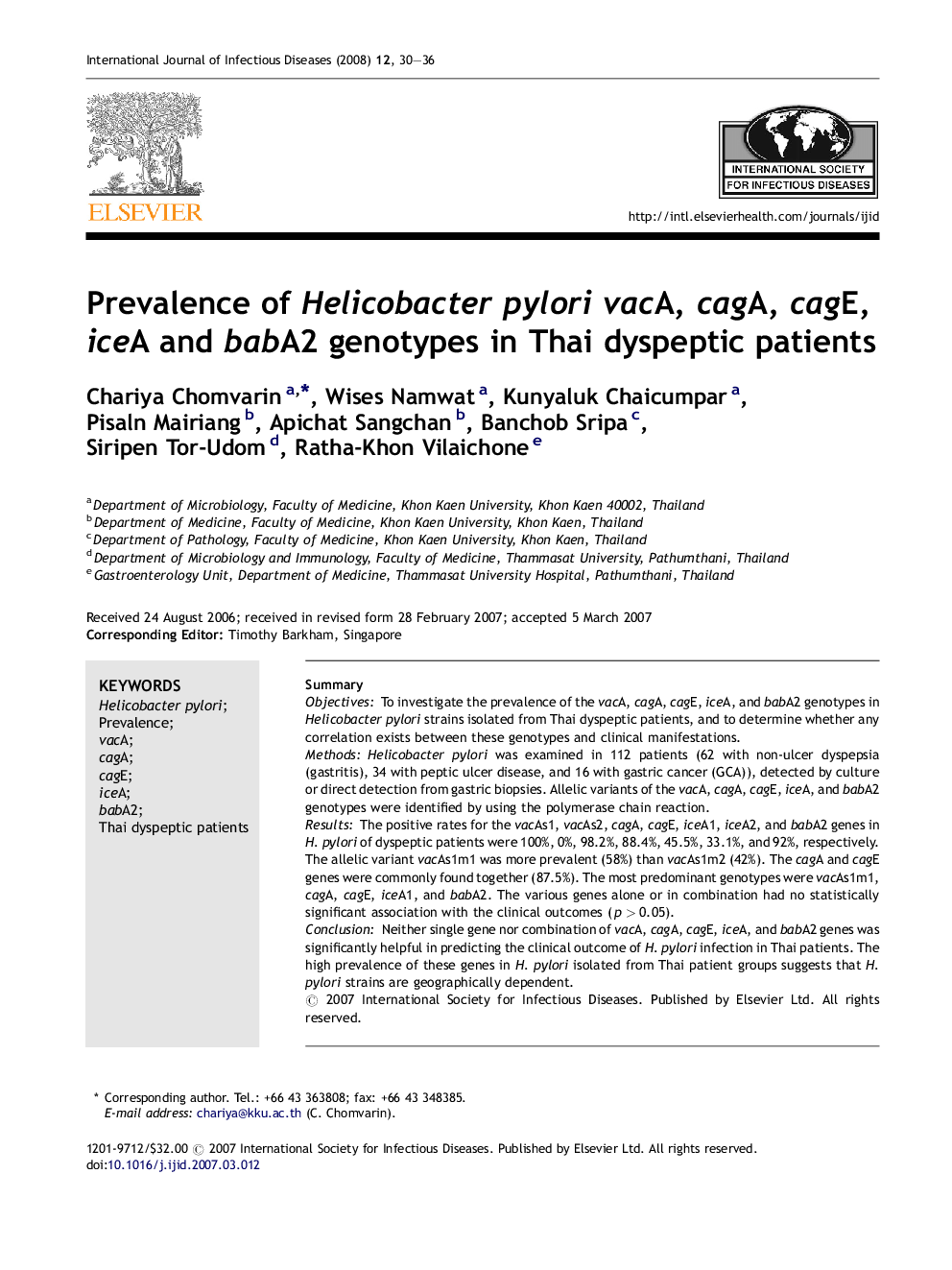| Article ID | Journal | Published Year | Pages | File Type |
|---|---|---|---|---|
| 3364159 | International Journal of Infectious Diseases | 2008 | 7 Pages |
SummaryObjectivesTo investigate the prevalence of the vacA, cagA, cagE, iceA, and babA2 genotypes in Helicobacter pylori strains isolated from Thai dyspeptic patients, and to determine whether any correlation exists between these genotypes and clinical manifestations.MethodsHelicobacter pylori was examined in 112 patients (62 with non-ulcer dyspepsia (gastritis), 34 with peptic ulcer disease, and 16 with gastric cancer (GCA)), detected by culture or direct detection from gastric biopsies. Allelic variants of the vacA, cagA, cagE, iceA, and babA2 genotypes were identified by using the polymerase chain reaction.ResultsThe positive rates for the vacAs1, vacAs2, cagA, cagE, iceA1, iceA2, and babA2 genes in H. pylori of dyspeptic patients were 100%, 0%, 98.2%, 88.4%, 45.5%, 33.1%, and 92%, respectively. The allelic variant vacAs1m1 was more prevalent (58%) than vacAs1m2 (42%). The cagA and cagE genes were commonly found together (87.5%). The most predominant genotypes were vacAs1m1, cagA, cagE, iceA1, and babA2. The various genes alone or in combination had no statistically significant association with the clinical outcomes (p > 0.05).ConclusionNeither single gene nor combination of vacA, cagA, cagE, iceA, and babA2 genes was significantly helpful in predicting the clinical outcome of H. pylori infection in Thai patients. The high prevalence of these genes in H. pylori isolated from Thai patient groups suggests that H. pylori strains are geographically dependent.
